Spring swans at Tagish, Yukon
Our spring swan hunt on April 19th began at Carcross, but there were few swans so just before 4:00 pm we headed for the bridge at Tagish where numbers are usually much higher. That’s a scenic 34-km drive.
Yukon Highway 8, more commonly called the Tagish Road, is a 2-lane paved road that runs 54 kilometers (34 miles) between the South Klondike Highway at Carcross and the Alaska Highway at Jake’s Corner. For us the road began this way, with Caribou Mountain dominating the view.
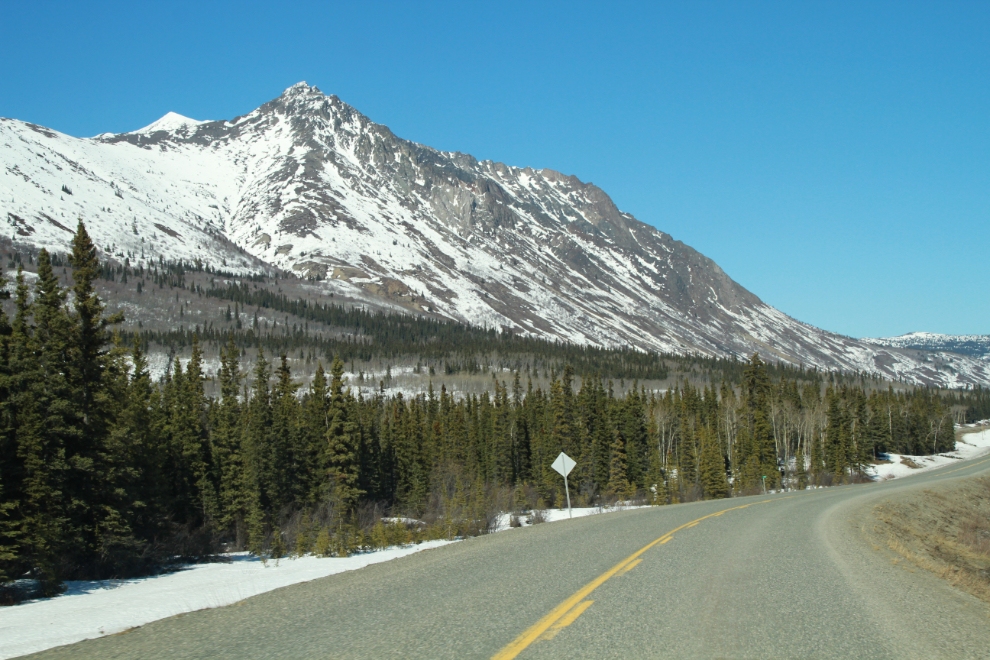
It was nice to meet some mule deer a minute later, but I was sorry we scared them off into deep snow.
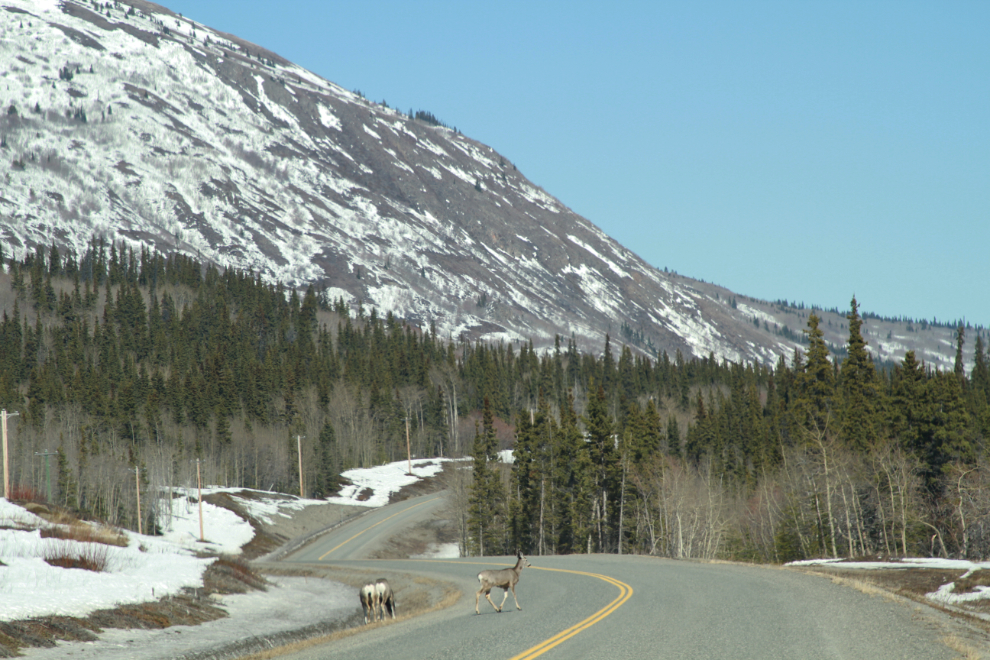
Arriving at Tagish, we parked at the Tagish Bridge Recreation Site, at the northwest corner of the bridge across the Six Mile River, also known as the Tagish River. The plan was to walk across the bridge to where the heaviest concentration of birds usually is. I started with the closest swans, though – the next photo looks up the river.
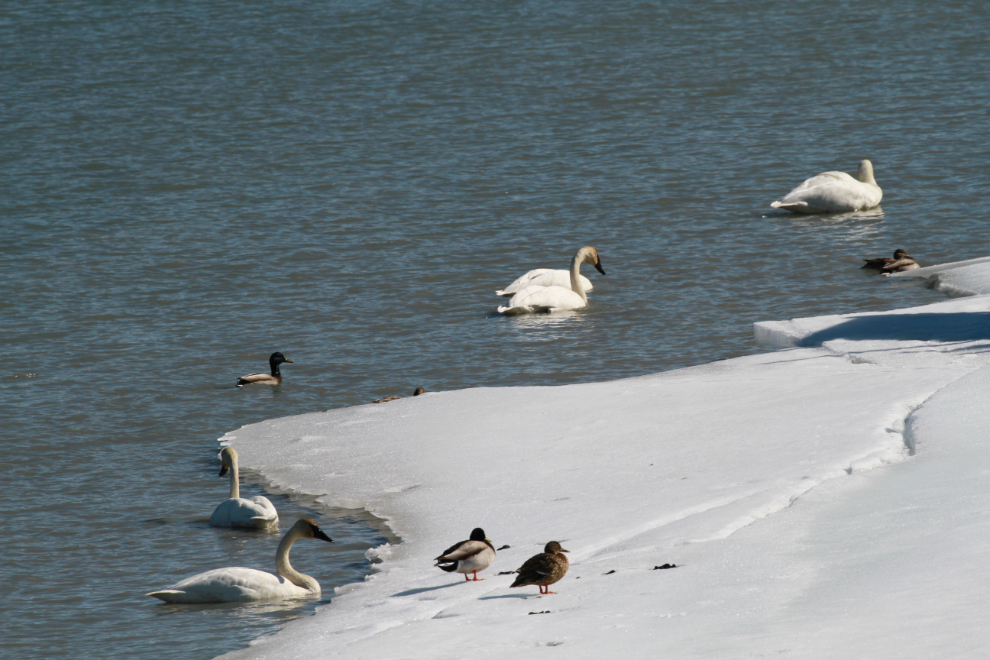
The best light was looking down the river, though the birds were a fair distance away. The next photo was shot with my 100-400mm lens backed off to 142mm.

At 400mm I could get a decent look at those birds. The vast majority of the swans are Trumpeters (Cygnus buccinator). I don’t think I’ve seen any Tundra swans (Cygnus columbianus) yet this year, but perhaps I just haven’t been looking close enough – the differences aren’t striking.
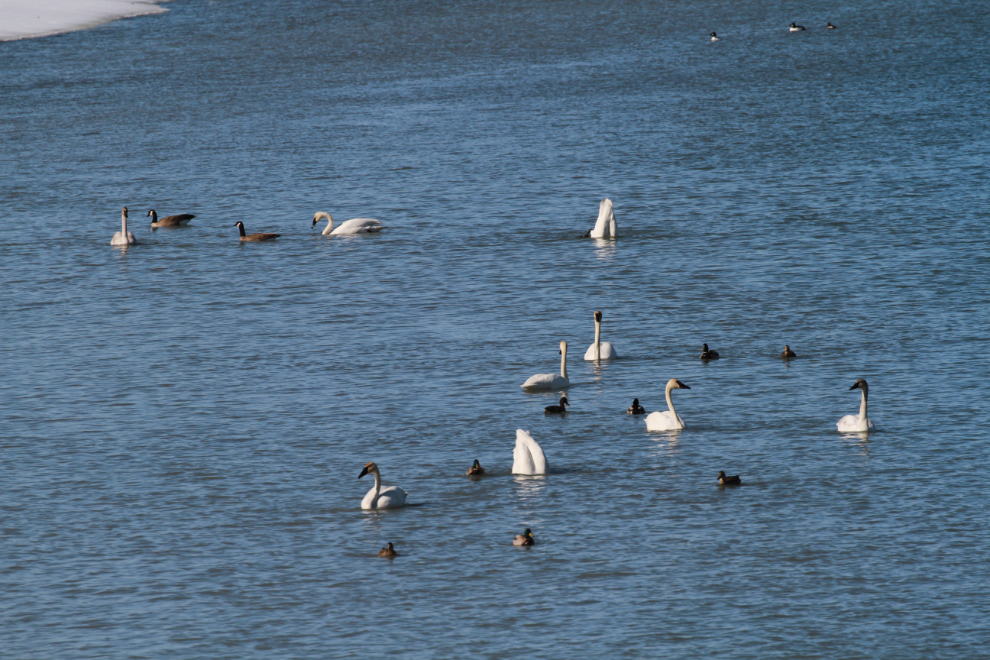
While the close-up photos of the swans and other birds are the prize, the next photo shows the broad view of my Yukon. No towers, no smog, no logging clearcuts, no traffic, no crowds – just the peaceful sight and sound of swans as they rest on their long migration.
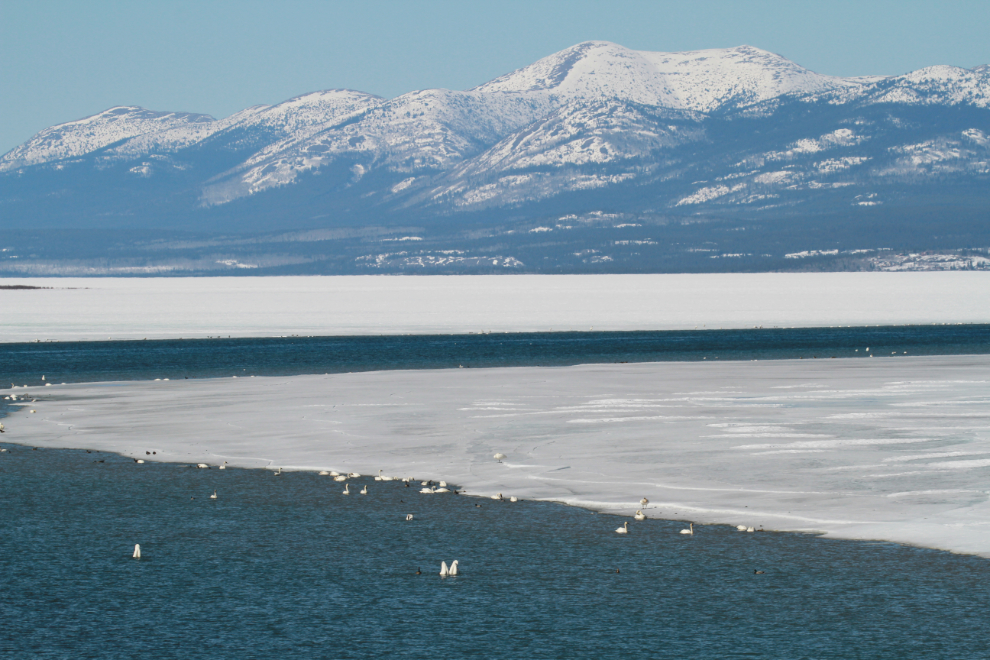
Karla shot the next photo, of me shooting from the middle of the bridge, including the photo above.
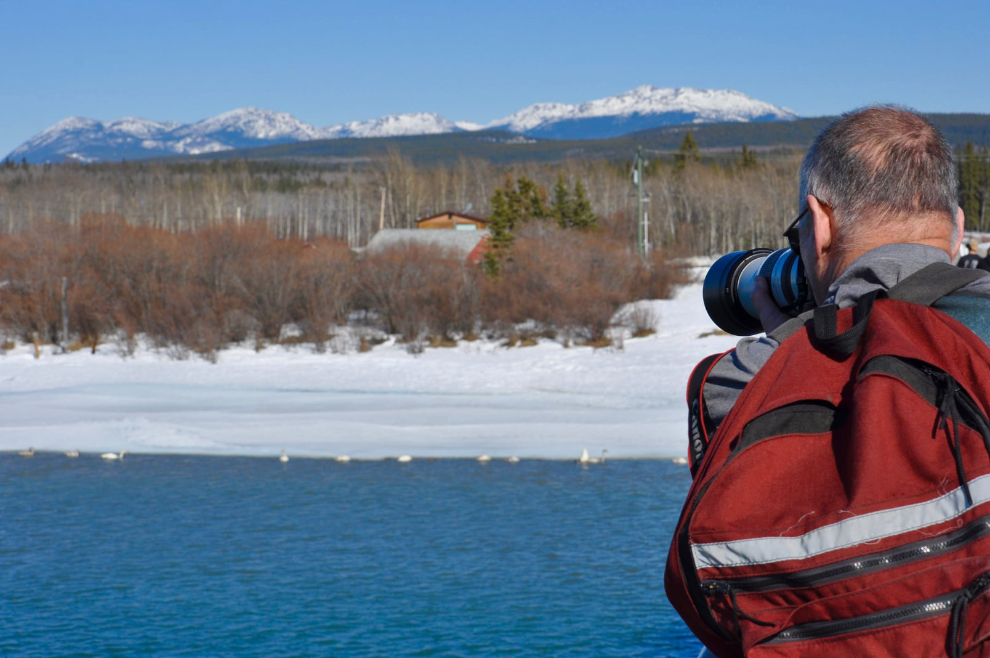
The rest of the photos were all shot looking downriver from the northeast corner of the bridge, where the best light and the largest concentration of birds were.
It’s nice to be able to get three species in one photo. There are occasional minor disagreements, but that happens among the swans, too.
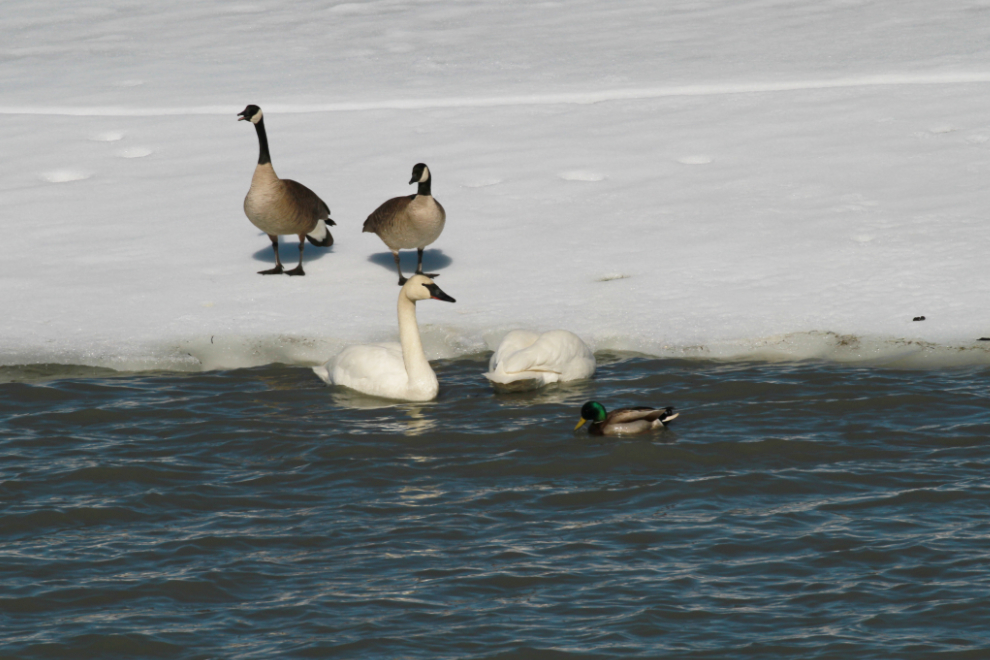
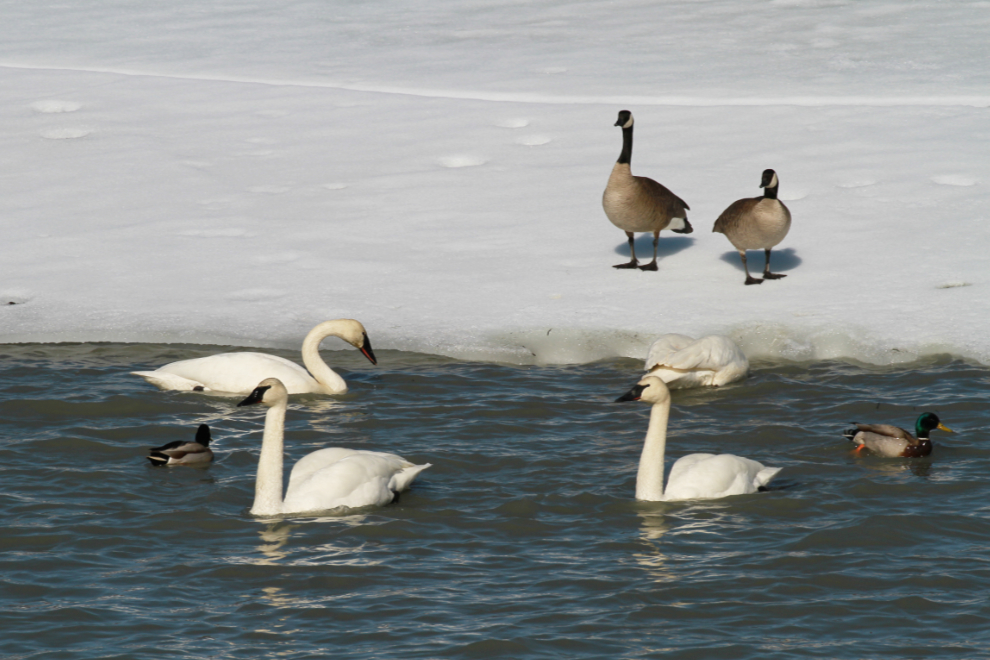
The ducks feed off the material stirred up by the feet and bills of the swans. It seems to work very well for them.
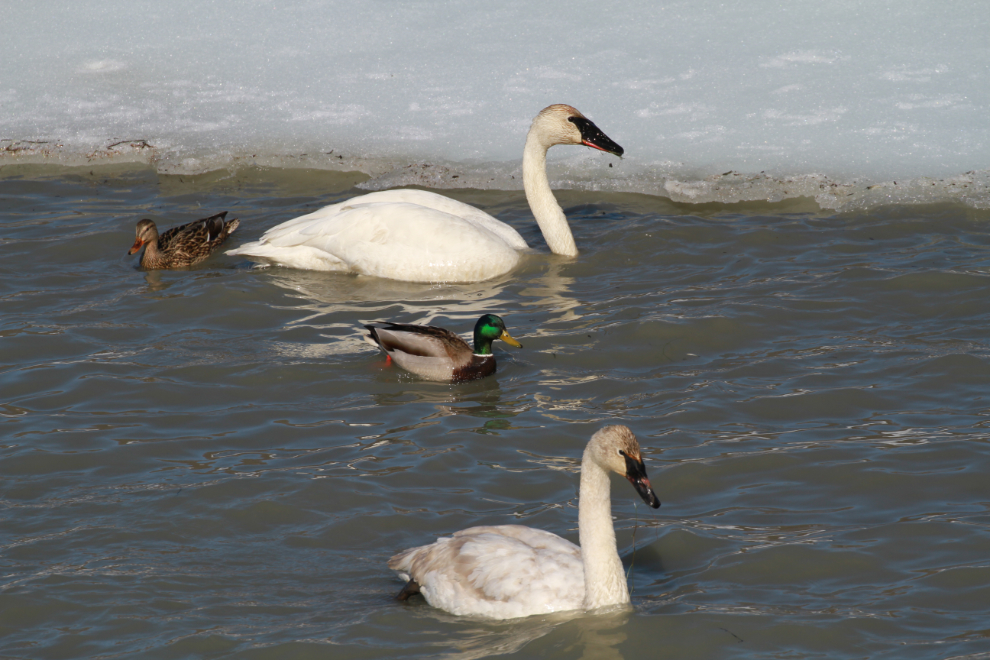
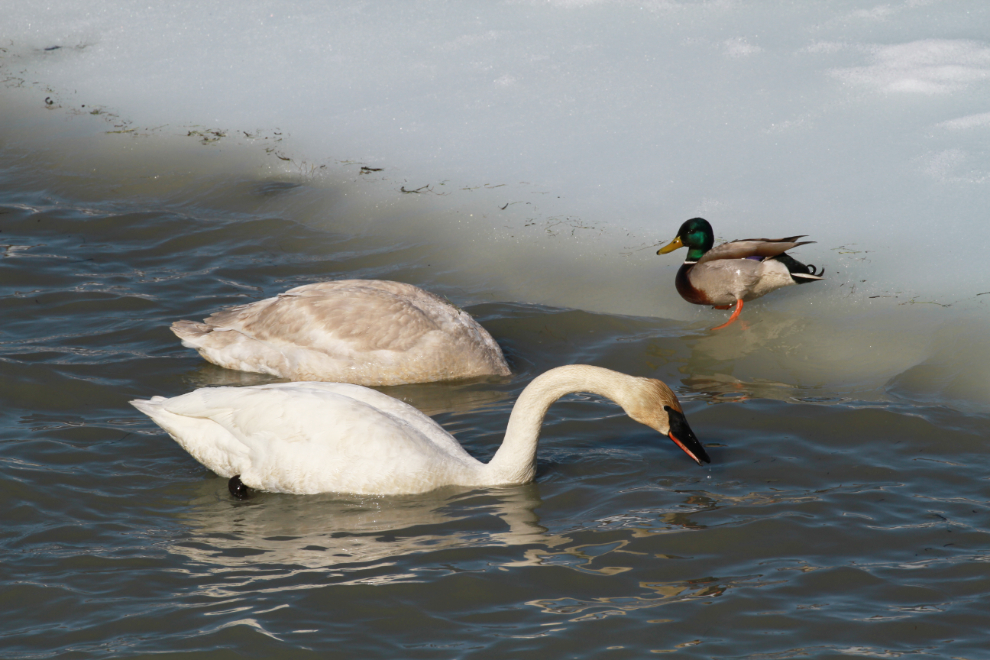
Rarely do any of the birds – the swans in particular – take note of our presence. Getting eye contact with this swan was a notable exception. We’re always very careful to not disturb them.
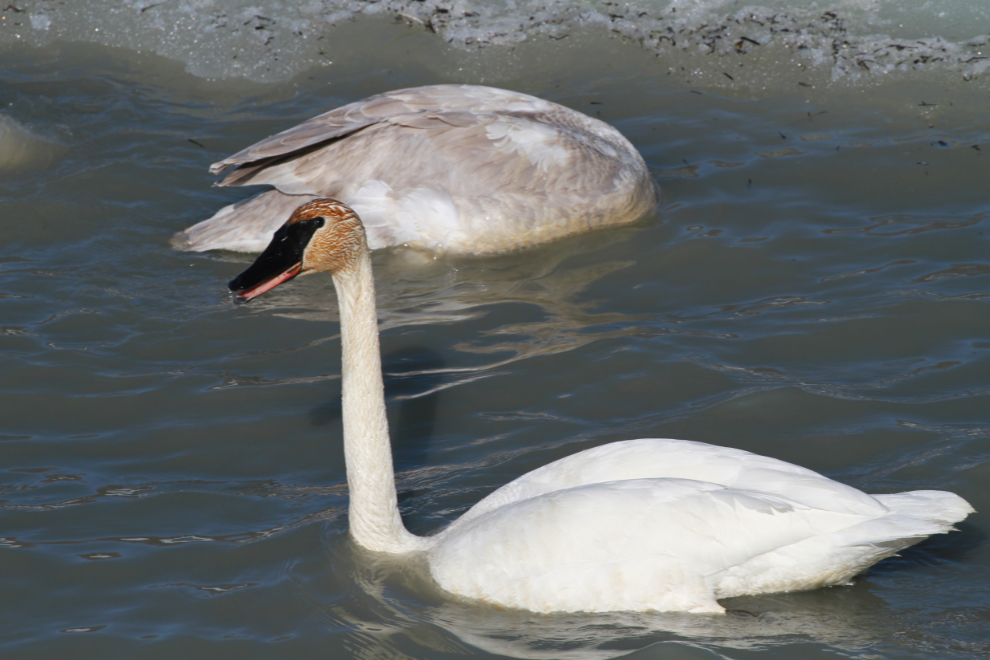
Some spots get very popular.

Backing up for another broader look – about 50 birds of several species quietly feeding.
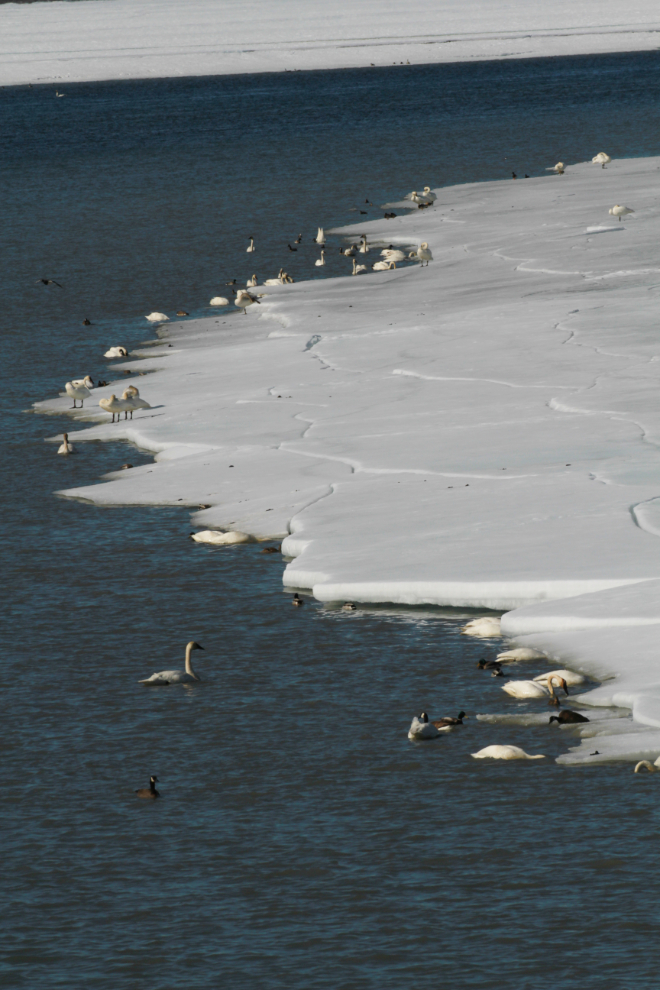
They’re “only” Canada geese, but this photo just feels so “wilderness Canada” with that incredible sky. I know that in cities like Vancouver they’re considered pests by many (and I understand – I’ve seen what they’ve done to Stanley Park), we don’t see that many so they’re much loved here.
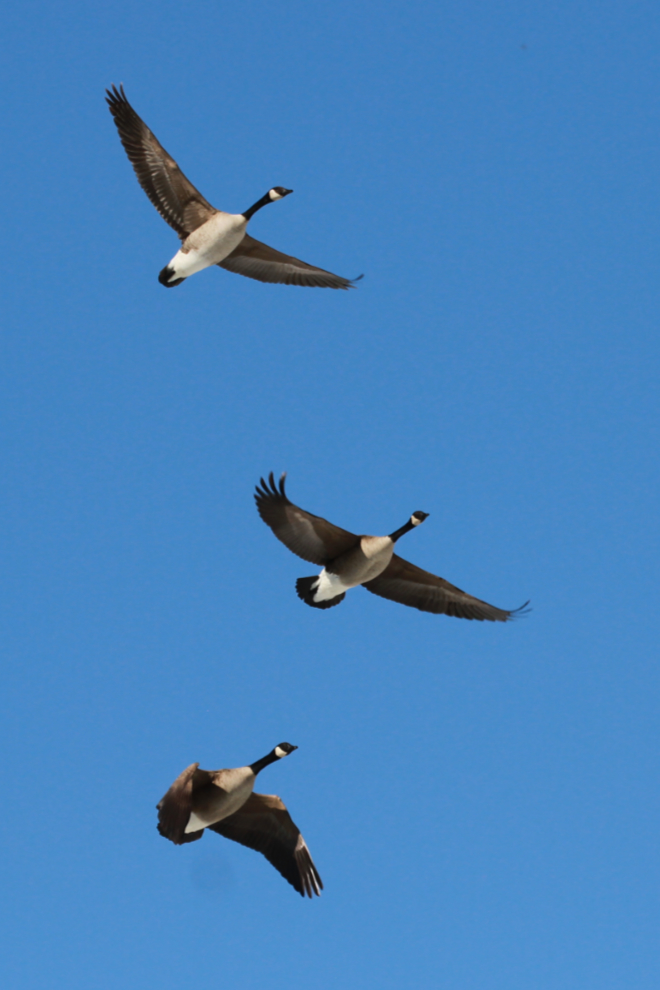
Sometimes you get lucky and there’s lots of action like wing flapping and flying, but sometimes it’s quiet – this was a quiet period and watching this bird was really nice.
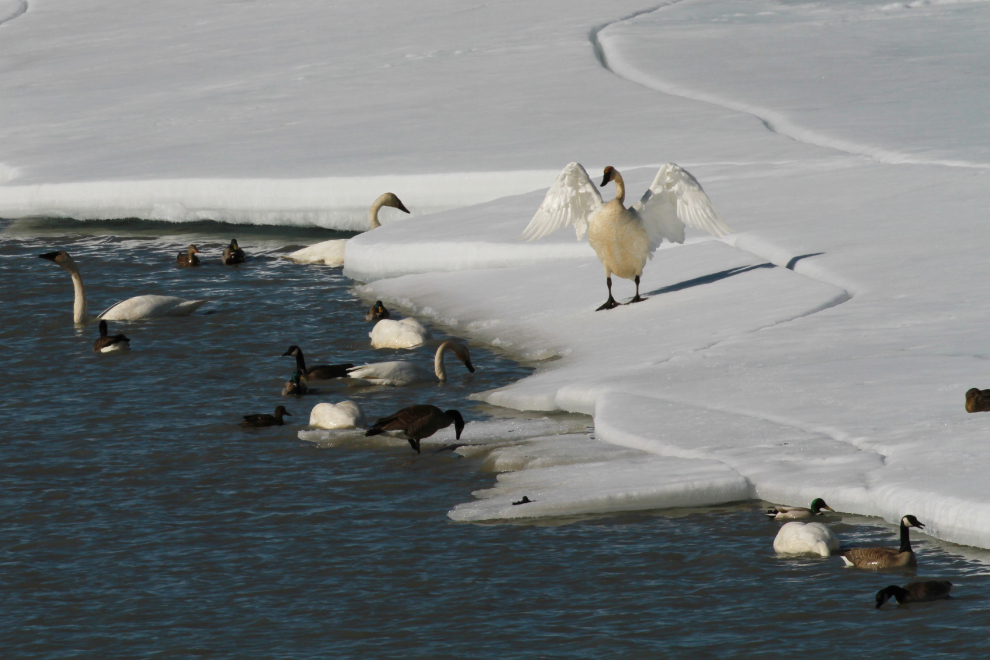
The Canada geese that were closest finally joined in the feeding.
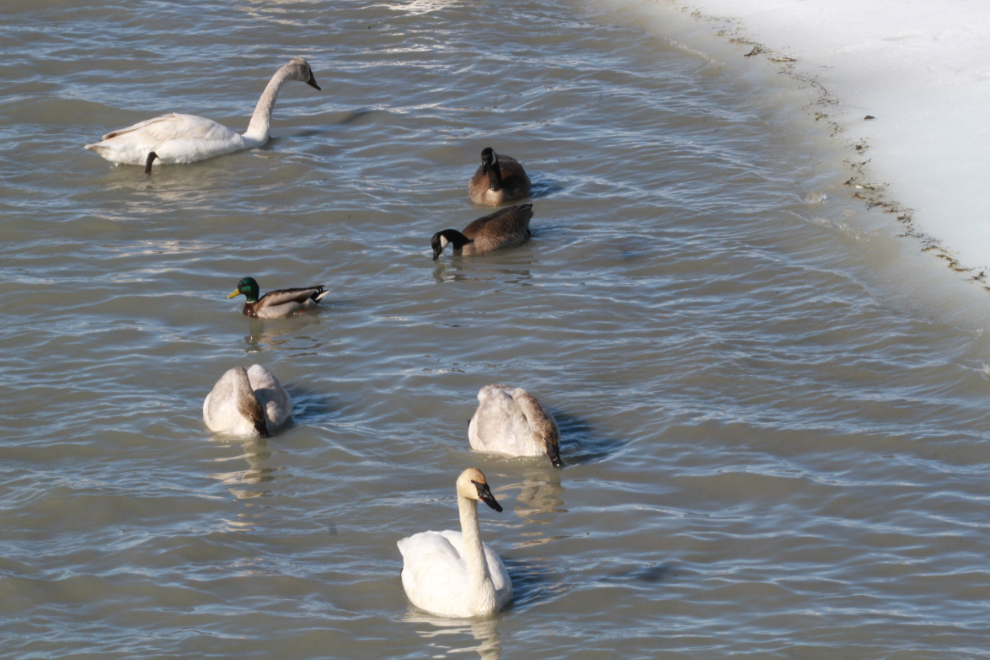
I wonder if the mallard contributes anything to the partnership or if he only receives benefits from it.
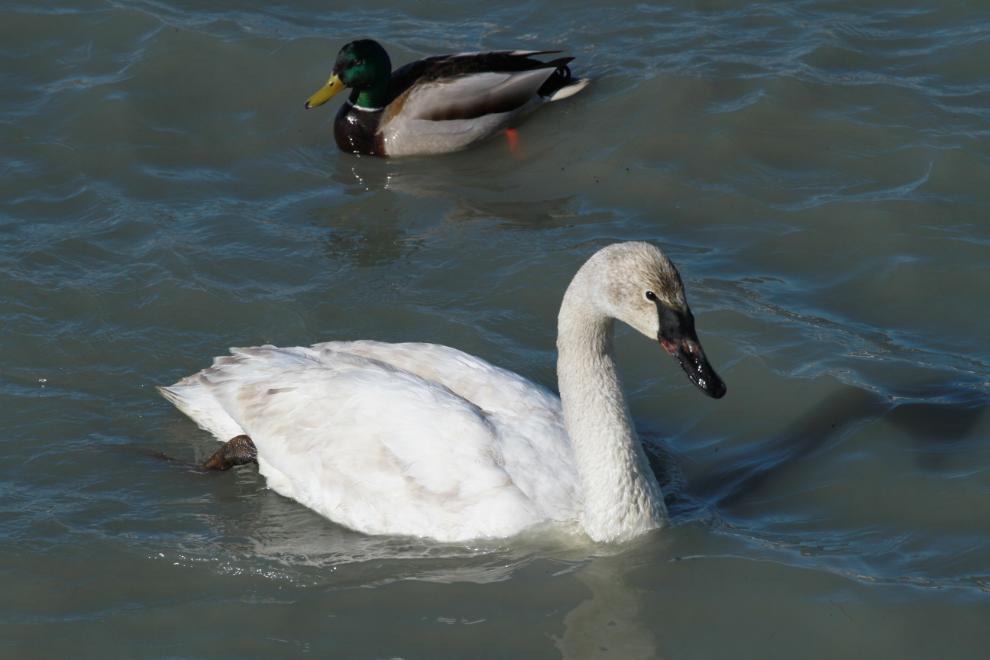
Those huge feet can stir up a whole lot of mud!
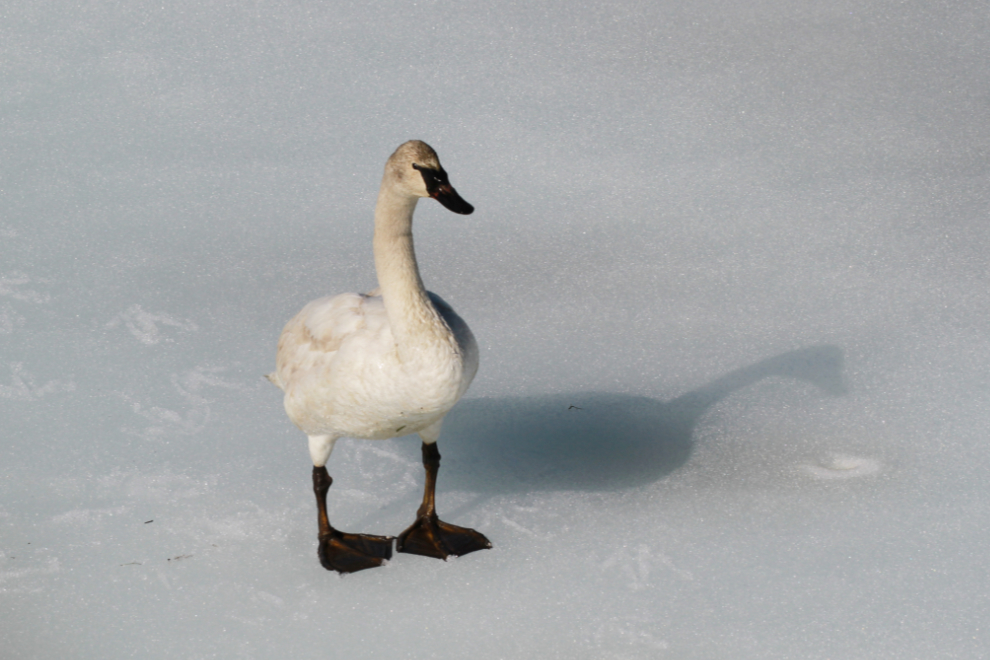
It takes a lot of that stringy grass to feed a bird this size.
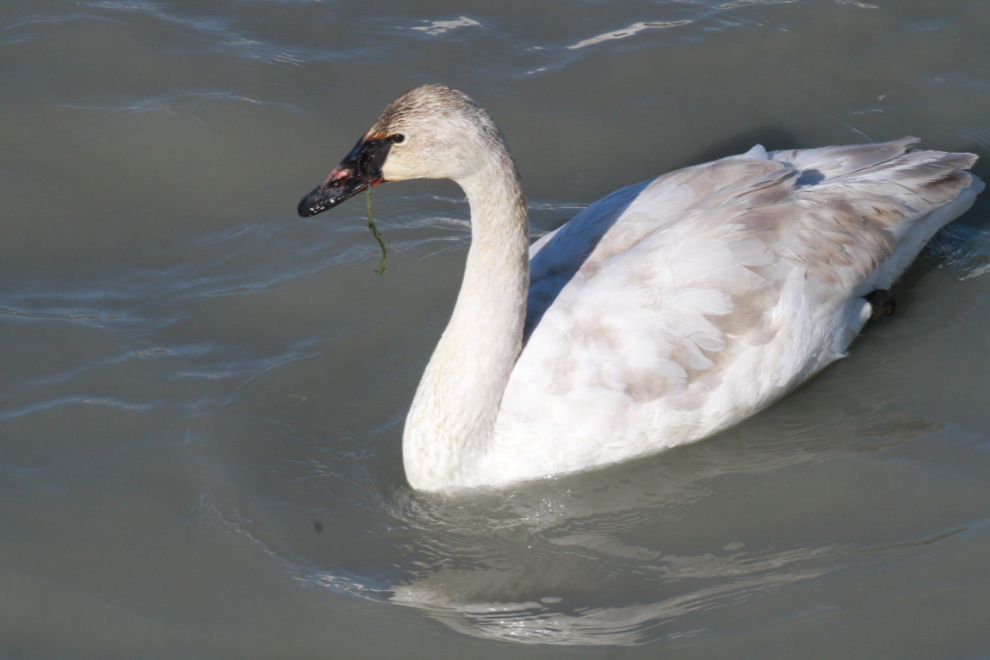
As we were walking back to the truck to start the drive home, several swans took flight. I wasn’t ready for them, but got a few snaps off 🙂

An afternoon like that makes it very easy to be hugely grateful to live in the Yukon.
How fantastic to have such great interpretive notes on the drive we just took yesterday. Thank you!
My pleasure, Kolin – I’m glad the timing worked out so well 🙂
Seeing the swans getting along with the other water paddlers amazes me. During my upbringing in Michigan, and from repeated experience around water fowl, I’ve developed an expectation of swans as being vicious. You’ve shown me another side.
Perhaps the wild swans are very different creatures during migration. The fact that there are only 2 swans on any of the subarctic and Arctic lakes where they nest hints that they don’t put up with other birds then.